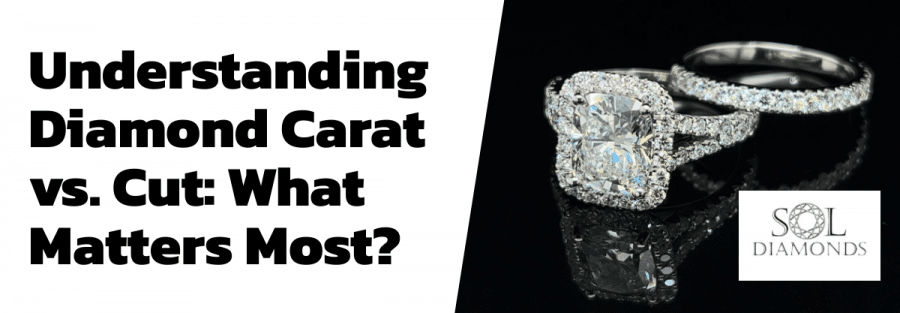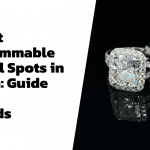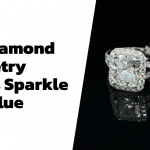Diamonds have captivated humanity for centuries with their brilliance and enduring beauty. When considering a diamond purchase, buyers often face a dilemma: should they prioritize carat weight or the quality of the cut? Both factors play significant roles, yet understanding how they intertwine can help in making an informed choice.
Exploring Diamond Carat
Carat weight is one of the most well-known aspects of diamonds. It represents a diamond’s size and mass. Generally, larger diamonds are more valuable, but a heavier diamond does not always guarantee superior beauty. For instance, two diamonds may weigh the same in carats, but if one has a better cut, it will appear more brilliant and command a higher price.
Many buyers mistakenly equate carat weight with quality. In reality, carat is merely a measurement. A larger diamond with a poor cut might look dull compared to a slightly smaller diamond that is masterfully cut. This distinction is crucial to understand when evaluating how much value each diamond offers.
The Importance of the Diamond Cut
The cut of a diamond is often considered the most critical factor in determining its overall appearance. A well-executed cut enhances a diamond’s ability to reflect light, creating that scintillating sparkle that many seek. Even a diamond with high clarity and color might lose its charm if not properly cut.
Expert jewelers assess several components when determining the quality of a cut:
- Proportions: The angles and relative dimensions of the diamond facets.
- Symmetry: The precise alignment and balance of each facet contribute to optimal light performance.
- Finish: The polish on the diamond’s surface that affects how light is refracted.
A poorly cut diamond often appears smaller and less lively than a diamond of similar carat with an exceptional cut. The interplay of light, or “fire,” in a diamond is a direct result of the precision and artistry in its cut.
Comparing the Two: Carat and Cut
Choosing between carat and cut is similar to weighing quantity against quality. On one hand, a greater carat weight may satisfy a desire for size, but on the other, a superior cut could amplify the diamond’s beauty beyond its measured weight. The debate between carat and cut is like comparing a book’s length with the eloquence of its prose.
Here are some key considerations when comparing the two:
- Light Performance: A well-cut diamond exhibits enhanced brilliance due to optimal light reflection.
- Aesthetic Impact: The cut determines the diamond’s sparkle and overall beauty, often making up for its slightly smaller size.
- Investment Value: Though carat weight is a significant metric, a diamond’s market value is also driven by craftsmanship, defined by its cut quality.
Ultimately, the decision may depend on personal preferences and budget. Buyers might choose a larger diamond if size is a priority or opt for a slightly smaller one with exceptional craftsmanship for its dazzling finish.
Practical Tips for Diamond Buyers
When faced with the choice between carat and cut, keeping a few practical tips in mind can facilitate a better selection:
- Examine the Diamond in Person: A diamond’s brilliance is best appreciated under natural and controlled lighting conditions.
- Consult with Experts: Seek advice from reputable jewelers or gemologists who can provide detailed analyses of the diamond’s cut quality.
- Prioritize Overall Beauty: Strive for a balance of carat and cut, ensuring that the diamond not only meets size expectations but also dazzles with its sparkle.
- Understand the Grading: Familiarize yourself with grading reports that outline carat weight, color, clarity, and cut, providing a comprehensive view of the diamond’s attributes.
These tips can help demystify the complexities behind diamond valuation, thus supporting a decision that meets both aesthetic desires and long-term value considerations.
Common Questions
Does a higher carat weight always mean a better diamond?
Not necessarily. While a higher carat weight indicates a larger diamond, it does not guarantee superior brilliance or overall beauty. The quality of the cut plays a crucial role in how much sparkle and life the diamond exhibits.
Can a diamond with a lower carat weight be more expensive?
Yes, when a diamond is exceptionally cut, its superior light performance can drive up its price despite a lower carat weight. An expertly cut diamond often commands a premium because its aesthetic appeal surpasses that of larger, poorly cut stones.
Should I focus more on cut or carat?
Prioritizing the cut is advisable because it determines the diamond’s overall brilliance. However, the final choice should be aligned with personal preferences and how each attribute fits into the desired look and budget.
Conclusion
Purchasing a diamond involves balancing the tangible measure of size with the intangible beauty of craftsmanship. While carat weight offers an understanding of a diamond’s mass, the cut ultimately governs its brilliance and sparkle. A diamond that is expertly cut can radiate unmatched beauty, making it a worthwhile investment even if it is slightly smaller. By focusing on both elements and consulting experts when necessary, buyers can acquire a gemstone that truly meets their aesthetic and financial goals. Ultimately, the brilliance of a diamond is not solely defined by its weight but by the artistry encapsulated in each carefully crafted facet.



